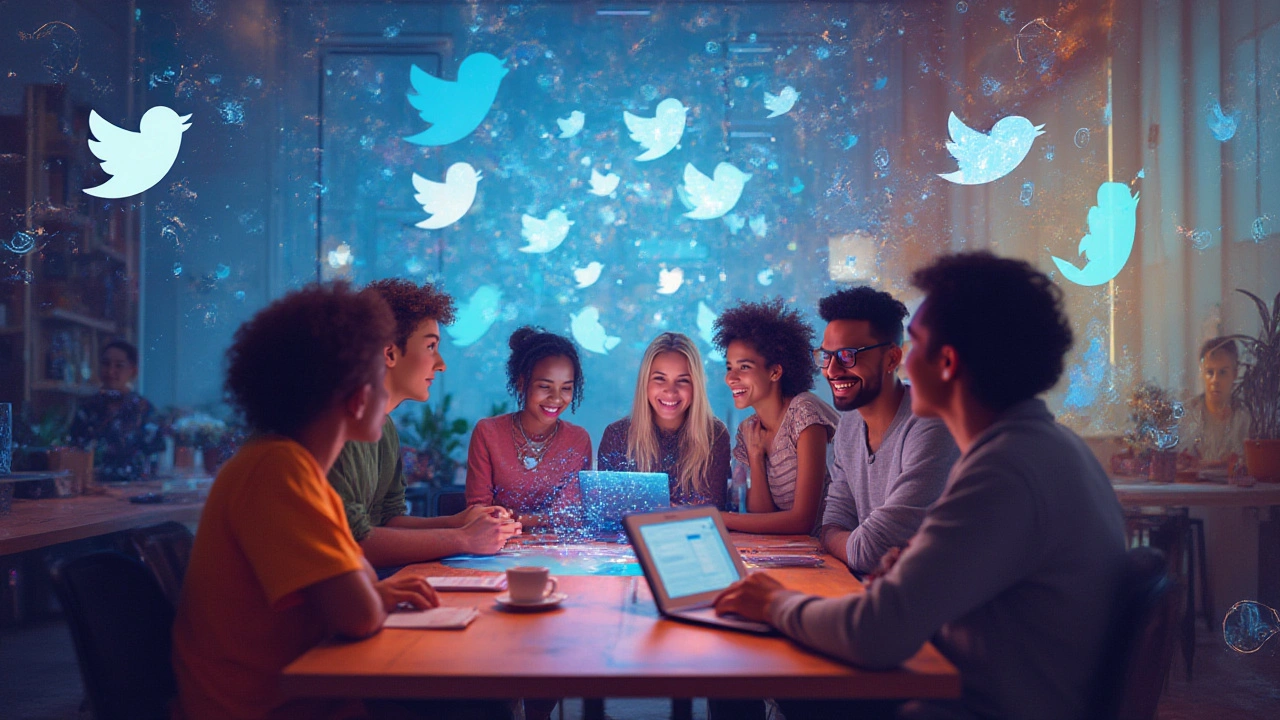Ever feel like Twitter moves faster than your coffee kicks in? You tweet something clever, blink, and it’s buried under doomscrolling and trends you can’t keep up with. Now picture having an always-on assistant that pumps out witty tweets, slides into trending conversations, and warmly responds to your DMs while you live your actual life. That’s what ChatGPT for Twitter is all about. It’s more than a robot—it’s a game-changer for anyone tired of feeling invisible on the world’s quickest social platform.
How ChatGPT Changes the Twitter Playbook
The biggest difference between brands or creators that win on Twitter and those that are ignored? Consistency. Most of us don’t have time to tweet every hour or come up with sharp replies that boost engagement. ChatGPT isn’t just some copy-pasta tool; it learns your style, mirrors your voice, and works long after you’ve put your phone down for the night. That changes the game.
For years, automation on Twitter meant boring scheduling tools or bots that made you sound like, well, a bot. Now, thanks to advanced AI language models, you can actually have conversations, jump on trends, and reply with a personality that fits your brand—or your actual mood. In 2024, OpenAI reported that social media managers using ChatGPT saved an average of 12 hours a week, mostly because AI took over repetitive stuff: answering basic questions, brainstorming tweet ideas, and monitoring trending hashtags. That time adds up, letting you focus on strategy instead of chasing every notification.
Worried about sounding robotic? Forget it. Modern ChatGPT can be trained on your own tweets or blog posts, so your replies and posts feel like you—not a generic virtual assistant. Want to be funny, sarcastic, or ultra-professional? Feed it examples, and it picks up those cues, learning the subtle stuff that sets you apart. Some power-users even teach ChatGPT their quirks—like always adding a GIF, using specific hashtags, or referencing inside jokes their followers love.
But the real win isn’t just about cranking out content. It’s about responding when your audience is most active (often 2 a.m. or during sports games, not just business hours), catching trending topics the second they hit, and making sure new followers get a warm, human-sounding welcome. The folks who tap into this tech aren’t just saving time—they’re dominating the conversation.
Check this out:
| Benefit | Manual Posting | With ChatGPT |
|---|---|---|
| Average Tweets/Day | 2-5 | 10-30 |
| Response Time | 1-8 hours | <30 minutes |
| Trending Hashtag Participation | 1-2/week | 7-10/week |
| Time Spent (weekly) | 20 hours | 6-8 hours |
The Nuts and Bolts: Setting Up ChatGPT for Twitter
It’s tempting to think you can just copy-paste ChatGPT into Twitter and call it a day. There’s more to it. The best results come when you combine tools and tweak settings so the AI feels like you—not a generic “AI expert.” Here’s what people actually do to get this working (and what makes all the difference):
- Connect a Twitter Bot to ChatGPT. Zapier, Make, and custom scripts are favorites for linking ChatGPT outputs to your Twitter account. Most use OpenAI’s API plus a posting tool. It doesn’t take coding skills anymore—no more excuses.
- Train ChatGPT on Your Voice. Feed in your tweet history, blog posts, or even your DMs (minus sensitive stuff). The more examples you give, the more natural it sounds. Some people literally copy-paste their own tweets or threads into ChatGPT’s prompt to get close matches.
- Set Boundaries. You decide what ChatGPT can and can’t do: like replying to certain keywords, jumping on trending hashtags, or staying away from controversy. Some users set up keyword blocks to avoid touchy topics or negative engagement.
- Give Rules—for Tone and Style. Tell ChatGPT to use “I” or “we,” add emojis, or reference specific trends. Add in your industry slang, make sure it doesn’t oversell, and have a list of words it should never say. The best results happen when you’re detailed in your instructions.
- Schedule or Go Real-Time. Some folks use AI to batch-create a dozen tweets at once and schedule them. Others use AI for real-time replies and trend-jacking. It depends on your energy (and how hands-off you want to be).
Most important, keep checking the responses. Even the best chatbots need a little nudge or retraining when they go off track or miss the mark on sarcasm (it happens more than you’d think). ChatGPT gets better over time, but it’s never set-and-forget—especially if you care about your reputation.

Beyond Scheduling: AI-Powered Engagement and Growth
Now, let’s get honest: More tweets do not equal more followers. People stick around when they feel like you “get” them, reply to their questions, and actually care—not just blasting out promotional noise. This is where ChatGPT shines. When you set it up to instantly reply to mentions, DMs, and comments, engagement soars because nobody feels ignored.
Here’s how top creators and brands are using ChatGPT to step up their Twitter game in 2025:
- Fast Replies: Instant answers to DMs and mentions, so nobody wonders if you’ve ghosted them. People love speedy interaction and remember it the next time you tweet.
- Personalized Welcome Messages: When someone new follows, ChatGPT can DM a message tailored to that person’s bio, location, or interests. It’s not just “thanks for the follow”—it’s “Hey, saw you’re into indie games too!”
- Live Trend Tracking: AI can monitor hashtags, trending news, and popular memes in your field—then craft on-the-fly tweets that put you into the thick of conversations just as they take off.
- Polls and Thread Ideas: Never run out of material. ChatGPT can brainstorm thread topics, poll questions, or quote-tweet ideas by checking what’s buzzing among your followers or competitors.
- Follower Analysis: Analyze your audience’s replies and interests, then suggest tweet types or content themes most likely to resonate. Data-driven content isn’t boring if it hits the right notes.
A July 2025 poll by Sprout Social found that Twitter accounts using ChatGPT-powered replies saw a 38% bump in engagement and a 22% faster growth rate in followers compared to standard scheduling-only accounts. In crowded spaces—think crypto, music, sports—being the first and friendliest to reply sets you apart. When someone tweets about a viral moment or niche event, your account can swoop in with a smart comment or question, all driven by the AI. It’s the digital version of always being in the right place at the right time.
If you’re a community manager for a brand, the benefits go deeper. ChatGPT can flag important or sensitive messages, suggest diplomatic responses, or handle complaints before they blow up. All without getting snarky or defensive the way a tired human might after the twentieth angry DM that day.
Best Practices and Surprising Shortcuts for Twitter Success with ChatGPT
Ready to let ChatGPT take the wheel? It’s tempting, but the folks who crush it don’t set-and-forget. They tinker, monitor, and give feedback—just like you would with any real team member. If you want to stay ahead, steal these key tips and tricks:
- Use Data to Refine: Don’t just track likes and retweets—check response patterns. If nobody responds to your polls on Fridays, skip them. If more people DM in the evening, schedule replies then. Let data drive your tweaks.
- Mix Human and AI: The secret sauce? Only use ChatGPT where it adds value. Jump in yourself on sensitive topics or when a real apology matters. AI isn’t great with nuance (yet).
- Don’t Over-Automate: If every tweet sounds perfectly polished, people get suspicious. Deliberately toss in a typo or weird emoji now and then. It feels more real.
- Respond Beyond Your Mentions: Use AI to monitor conversations about competitors, industry news, or even trending memes. Jump into threads (politely) to offer insight, jokes, or questions. It’s the best way to expand your reach.
- Experiment with Advanced Prompts: Teach ChatGPT to write like you, sure. But also give it multiple “personas”—like “friendly expert,” “sarcastic rival,” or “curious newbie”—for different situations. People enjoy variety.
- Keep Up With Updates: Twitter and ChatGPT both move fast. A feature that worked in April might be old news by July. Always check what’s new—better analytics, more detailed integrations, or fresh prompt templates.
- Respect Transparency: Legally and ethically, you have to disclose if a bot is replying for you. Most power users add a line in their bio (“Replies may be AI-assisted”) just to be safe.
Think about this: Five years ago, nobody would have guessed you could have a personal AI Twitter sidekick. Now, it’s not just possible—it’s quickly becoming the standard among creators and brands who want to ChatGPT for Twitter and blow right past the competition. Next time you see an account replying with perfect timing and just the right mood, there’s a good chance an AI is working behind the scenes.


I'm a Marketing Expert with over a decade of experience in the industry. I specialise mainly in online marketing and have worked with numerous global brands to elevate their online presence, build their brand image, and increase their sales. My passion lies in creating meaningful and engaging campaigns that truly resonate with audiences. In my spare time, I enjoy sharing my knowledge and experiences through my blog where I primarily write about the latest trends and tricks in online marketing.